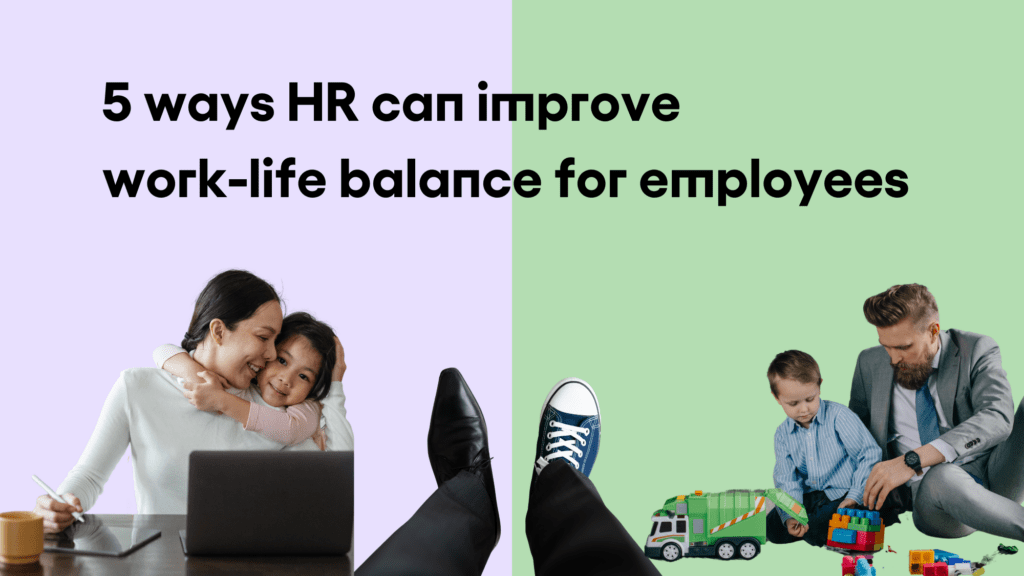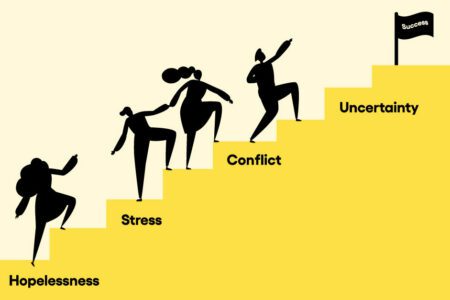Work-life balance wasn’t always a hard promise to make to yourself. Once employees left the office and their computers didn’t come home with them, it was almost inevitable to focus on home life.
Now, that dynamic has shifted. Unfortunately, for some employees, it’s an endless cycle of burnout and stress.
Balancing work and family or personal life can be challenging for many people, and for employees who are new to regularly working from home or remotely, it can be hard to disconnect, leading to problems with mental health and even interpersonal relationships.
Companies with work-life balance guidelines are setting a great example for organizations when it comes to helping employees thrive and encouraging an overall positive employee experience. Here are 5 tips for HR on how to improve work-life balance for employees.
1. Ensure managers lean more towards macro-management
It’s completely normal for organizations and employers to make sure that employees are getting their work done – it’s the employee’s job, of course. However, extreme monitoring and obsessive micro-management will most likely do more harm than good.
Meeting goals and deadlines is still highly doable for employees, even without a manager sitting two doors from them at the office. If an employee doesn’t feel like they are trusted, they are more likely to resent the work their doing, and the organization they are doing it all for. That’s why building trust between employees and managers is crucial. By disconnecting from the idea that forcibly holding an employee’s hand is the only way to ensure maximum results, organizations simultaneously can create a sense of responsibility and accountability among their teams.
In fact, employees who are encouraged to be autonomous are almost always more productive because they have more control over their own tasks. As a result, a sense of real purpose is present, and as the focus shifts more on the results of the work done rather than the step-by-step process. Employees will feel less pressure and stress to perform a certain way and put more focus and energy on their deliverables, possibly even getting more done in the process.
2. Support (and even encourage!) flexible work hours
Gone are the days where it is acceptable and normal for an employee to be at the office by 9am and leave by 9pm, only to do again the next day.
According to the American Psychological Association, giving employees the flexibility of where they work and when they decide to work is one of the best decisions an organization can make. In fact, according to APA survey, 34% of employees say that flexible hours would help their mental health. Additionally, according to an October 2021 Gallup poll, 54% of employees working remotely said they would like to adopt a hybrid work schedule, while 37% say they want to keep working from home full time.
Improving work-life balance for employees isn’t just about not obliging them to do any work after the official workday ends. For many who struggle to disconnect from their computers past 5pm, work tasks tend to overtake other important parts of their lives, like spending time with their kids, spouses, or seeing friends and even spending time alone with themselves.
As human resources, work-life balance and strategies to help implement it can greatly help employees improve parts of their lives that don’t have anything to do with their jobs and careers. The most helpful approach for HR to improve work-life balance for employees is to let them have control over their routines and processes. Providing flexibility for employees to craft their own schedules gives them the freedom they need to take care of themselves, as well as those around them who need it, like family members with certain disabilities.
3. Let employees stretch their legs
Being chained to a laptop all day is not ideal, and many are starting to realize this. The truth? A one-hour lunch break cannot be the only break people get in their 8-hour long workday. It’s just not sustainable.
Even though they are working from home, employees might feel like it’s almost a crime to leave their desk or take a 5-minute breather. For companies to really promote effective work-life balance strategies, HR must make sure that employees know they are part of a company culture that not only allows for breathers throughout the day, but enthusiastically encourages them.
Breaks can help employees cultivate healthier habits and allows them to recharge throughout the day. A break can be anything, from taking time to grab a snack, checking in on pets, or going for a short walk around the block to stretch their legs. It’s important to make sure that employees are not afraid to change their status to ‘away’ for a short while, as this doesn’t mean that they are no longer being productive or working hard.
There is an abundance of benefits for both employers and employees when short breaks are taken throughout the day, like increased creativity and better mental well-being. Companies with work-life balance approaches benefit not only their teams, but the entire organization itself by promoting a healthy workplace and work culture and attaining better results in company goals and milestones due to boosted productivity and more positive attitudes.
4. Consider work-life integration for some
Work-life balance is important for most people who need that effective disconnect from work to focus on other components of their lives. But for others, a balance isn’t necessarily the answer.
What’s the difference between work-life integration vs. balance?
Work-life integration, according to Altassian, is when those who practice it “care less about what’s “work time” and what’s “personal time” and focus instead on what’s the best time to do these things.”
For those who don’t feel comfortable following suggestions of when it might be time to either set down work or get productive, work-life integration could very well be the answer they are looking for. The main difference between work-life balance and work-life integration is that the latter doesn’t make you have to compartmentalize and break down your day into specific slots. Instead, it allows for a natural flow that can help some employees feel less pressured to lead the perfectly scheduled workday.
Work-life integration can help some employees connect their careers and personal lives in a healthier way. Balancing work and family and personal lives can look different for everyone, especially now that working remotely is becoming more common. It can be difficult for some employees to fully allow themselves to stop working at five o’clock on the dot, and this can even cause the same stress as those who want to stop at the end of the workday but can’t bring themselves to. For HR helping employees with work-life balance, one must also consider how fully separating work and play might not be the best approach for everyone.
5. When in doubt, just ask
While it’s smart for organizations to make sure employees have adopted a healthy work-life balance for themselves, it can be difficult to guess what some employees might need. Every human being is so different, and those differences don’t just go away when a candidate becomes an employee.
For HR professionals, there are many questions to ask employees about work-life balance, so if there’s ever any doubt about what an employee needs to thrive within the organization, all they must do is talk to their employees. Everyone has different needs, and if talking frankly about them is encouraged, the organization is more likely to retain talent, simply because it made the choice to listen and deliver.
Honest communication between employers and their teams is one of the most effective ways to increase organizational success. It makes employees feel valued and creates a sense of trust between them and their higher-ups.
As an HR pro, you know that no two employees are alike. For an organization to truly thrive, it’s important to honor those distinctions by establishing the best possible work culture for employees and making sure that potential candidates are a good fit for it.
With the help of SuccessFinder’s tools, like Culture Fit, Performance Predictor, and SFPI you can make confident HR and talent management decisions, fully backed by psychology and data. Psychometric testing in recruitment is one of the most effective ways to hire top talent the first time, and we’re ready to help you make every new hire feel at home, and even predict employee performance before that first interview.
Book a demo with us today and see why hundreds of organizations love us.




